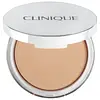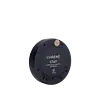What's inside
What's inside
 Key Ingredients
Key Ingredients

 Benefits
Benefits

 Concerns
Concerns

 Ingredients Side-by-side
Ingredients Side-by-side

Talc
AbrasiveOctyldodecyl Stearoyl Stearate
EmollientCalcium Stearate
Cosmetic ColorantCalcium Silicate
AbsorbentSilica
AbrasiveTrimyristin
Skin ConditioningNylon-12
PPG-12/Smdi Copolymer
EmollientMethicone
EmollientDimethicone
EmollientHydrogenated Lecithin
EmulsifyingTetrasodium EDTA
Potassium Sorbate
PreservativePhenoxyethanol
PreservativeMica
Cosmetic ColorantCI 77163
Cosmetic ColorantCI 77891
Cosmetic ColorantIron Oxides
CI 77007
Cosmetic ColorantCI 75470
Cosmetic ColorantCI 77742
Cosmetic ColorantTalc
AbrasiveOryza Sativa Starch
AbsorbentCellulose
AbsorbentZinc Stearate
Cosmetic ColorantButyrospermum Parkii Butter
Skin ConditioningMica
Cosmetic ColorantOctyldodecyl Stearoyl Stearate
EmollientVaccinium Myrtillus Seed Oil
Skin ConditioningMagnesium Stearate
Cosmetic ColorantCaprylyl Glycol
EmollientEthylhexyl Palmitate
EmollientPhenoxyethanol
Preservative1,2-Hexanediol
Skin ConditioningEthylhexylglycerin
Skin ConditioningTocopherol
AntioxidantBetaine
HumectantHelianthus Annuus Seed Oil
EmollientSilica Dimethyl Silylate
EmollientButylene Glycol
HumectantTricalcium Phosphate
AbrasiveSodium Hyaluronate
HumectantHexylene Glycol
EmulsifyingRosmarinus Officinalis Leaf Extract
AntimicrobialCI 77491
Cosmetic ColorantCI 77492
Cosmetic ColorantCI 77499
Cosmetic ColorantCI 77891
Cosmetic ColorantTalc, Oryza Sativa Starch, Cellulose, Zinc Stearate, Butyrospermum Parkii Butter, Mica, Octyldodecyl Stearoyl Stearate, Vaccinium Myrtillus Seed Oil, Magnesium Stearate, Caprylyl Glycol, Ethylhexyl Palmitate, Phenoxyethanol, 1,2-Hexanediol, Ethylhexylglycerin, Tocopherol, Betaine, Helianthus Annuus Seed Oil, Silica Dimethyl Silylate, Butylene Glycol, Tricalcium Phosphate, Sodium Hyaluronate, Hexylene Glycol, Rosmarinus Officinalis Leaf Extract, CI 77491, CI 77492, CI 77499, CI 77891
 Reviews
Reviews

Ingredients Explained
These ingredients are found in both products.
Ingredients higher up in an ingredient list are typically present in a larger amount.
Ci 77891 is a white pigment from Titanium dioxide. It is naturally found in minerals such as rutile and ilmenite.
It's main function is to add a white color to cosmetics. It can also be mixed with other colors to create different shades.
Ci 77891 is commonly found in sunscreens due to its ability to block UV rays.
Learn more about CI 77891Mica is a naturally occurring mineral used to add shimmer and color in cosmetics. It can also help improve the texture of a product or give it an opaque, white/silver color.
Serecite is the name for very fine but ragged grains of mica.
This ingredient is often coated with metal oxides like titanium dioxide. Trace amounts of heavy metals may be found in mica, but these metals are not harmful in our personal products.
Mica has been used since prehistoric times throughout the world. Ancient Egyptian, Indian, Greek, Roman, Aztec, and Chinese civilizations have used mica.
Learn more about MicaOctyldodecyl Stearoyl Stearate is created from stearic acid.
It is an emollient and thickens the lipid (oil) portion of a product. Due to its emollient properties, it may not be fungal-acne safe.
Phenoxyethanol is a preservative that has germicide, antimicrobial, and aromatic properties. Studies show that phenoxyethanol can prevent microbial growth. By itself, it has a scent that is similar to that of a rose.
It's often used in formulations along with Caprylyl Glycol to preserve the shelf life of products.
Talc is a clay mineral. It helps absorb moisture and improve the texture of products. Like other types of clay, Talc can have a slight exfoliating effect on skin. Talc can be added to increase the volume of products.
Some Baby powders are made by combining talc with corn starch. The word "talc" comes from Latin and originates from Arabic. Talc is a mineral commonly found throughout the world.
If you have any concerns about using talc, we recommend checking out the FDA's official page.
Learn more about Talc